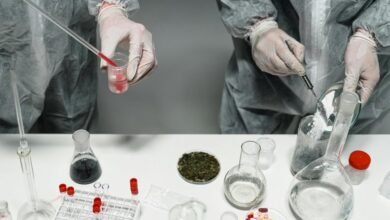Does Cbd Show up in Blood Work

The presence of CBD in blood work raises important questions for many individuals. As a compound derived from cannabis, CBD is metabolized in the liver and can be detected through specific testing methods. While standard drug tests typically do not target CBD, its detection can still present complications. Understanding the nuances of CBD testing is crucial for those concerned about health implications and workplace policies. What does this mean for users?
Understanding CBD and Its Components
Although cannabidiol (CBD) is one of the many compounds found in the cannabis plant, it has gained significant attention for its potential therapeutic benefits.
Advocates highlight its ability to alleviate anxiety, reduce inflammation, and manage pain.
The legality of CBD varies by region, affecting its accessibility and use.
Understanding these factors is essential for those exploring the potential CBD benefits in their lives.
How CBD Is Metabolized in the Body
CBD is metabolized in the body primarily through the liver, where it undergoes enzymatic processes that convert it into various metabolites.
The liver enzymes play a crucial role in CBD metabolism, breaking down the compound and facilitating its elimination from the body.
This metabolic process can influence the duration and intensity of CBD's effects, depending on individual variations in liver function.
Detection of CBD in Blood Tests
When considering the detection of cannabinoids in blood tests, it is important to note that CBD can indeed be identified through specific testing methods.
Blood analysis techniques such as gas chromatography and mass spectrometry allow for accurate CBD detection. These methods can determine the presence of CBD and its metabolites, providing valuable insights into dosage and potential effects on the individual.
Implications for Drug Testing and Health Assessments
How can the presence of CBD in blood tests affect drug testing and health assessments?
The detection of CBD may lead to complications in drug testing, particularly in workplaces with strict policies.
Furthermore, health assessments could be influenced by misconceptions surrounding CBD's legality and effects, potentially impacting medical decisions.
Understanding these implications is crucial for individuals seeking freedom in their health choices and lifestyle.
Conclusion
In the intricate dance of metabolism, CBD weaves its way through the body, leaving traces that can surface in blood tests like footprints in the sand. While its presence may not be the primary focus of standard drug screenings, it can cast shadows over health assessments and workplace policies. As individuals navigate this landscape, understanding the nuances of CBD's detection is crucial, illuminating the path toward informed choices and awareness in an evolving legal and health environment.






